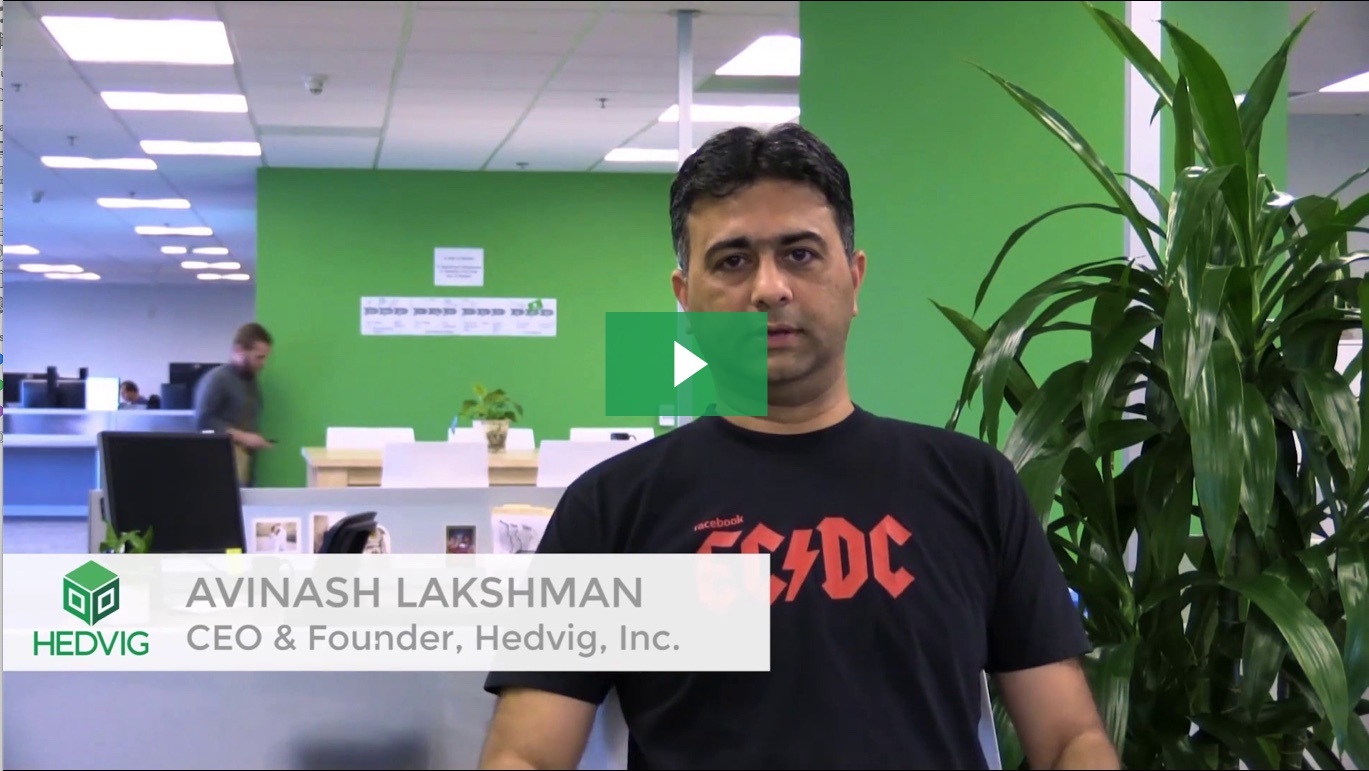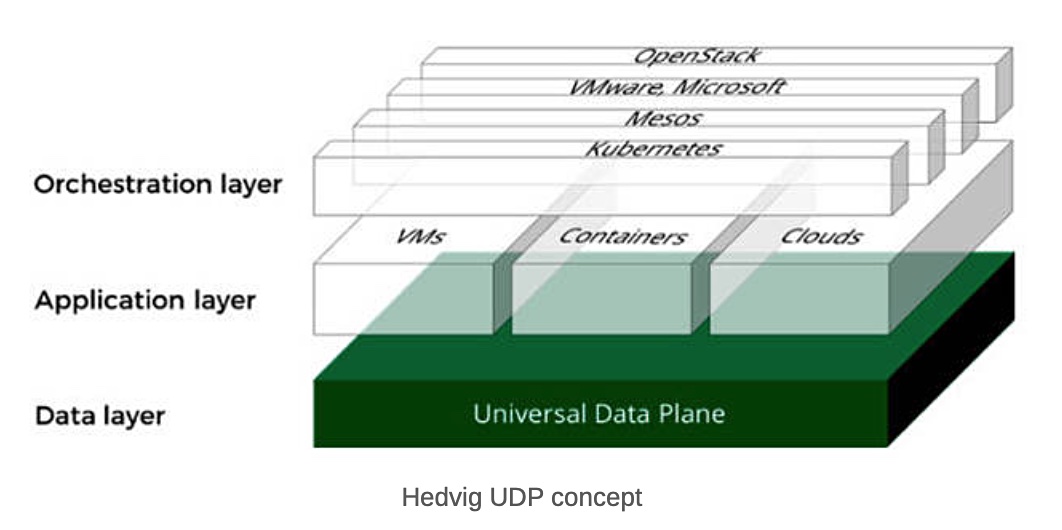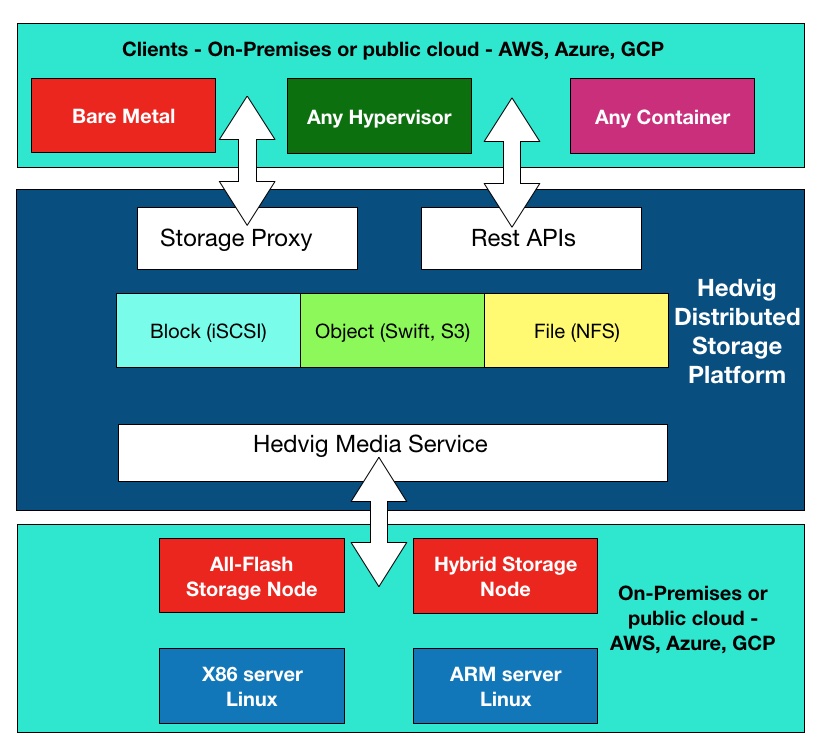Profile: Hedvig sells multi-protocol, scale-out, software-defined storage and says it is getting a strong helping hand from HPE to seed its technology in big companies.
Why does HPE want to get involved with this smallish startup?
The need
Hedvig thinks enterprises want to access storage in the same way that public cloud and hyperscale users do. Enterprises do not want hardware array lock-in, multiple overlapping single-silo suppliers or difficult storage management. They want their storage scalable, easy to use and rock-solid reliable.
They want any of their enterprise storage accessing clients to access any storage through a single platform service. By any storage, we mean files, blocks or objects, on hyperconverged server drives or external storage nodes. These reside in local or remote data centres or in the public cloud, all clustered together.
Storage clients can be ordinary servers, virtualised servers or containerised servers and live on-premises or in the cloud.
Company background
Hedvig engineers come from a public cloud and hyperscale background and have devoted their efforts to design their Distributed Storage Platform to function as a single central storage platform.
The company was started in 2012 by Avinash Lakshman, who helped develop Apache Cassandra for Facebook and Amazon’s Dynamo database. It has taken in $52m in four funding rounds. By contrast, this looks frugal compared with competitors such as Actifio ($311.5m), Cohesity ($410m) and Rubrik ($553m).
HPE participated in the most recent $21.5m C-round in 2017 though the Hewlett Packard Pathfinder organisation.
Here’s a short video about Hedvig:

Distributed Storage Platform
The Distributed Storage Platform (DSP) is described as a “private, hybrid, and multi-cloud data management system for virtual and container environments.” It is an abstraction layer, providing block, file and object protocol support to clients, and is based around a so-called elastic Universal Data Plane (UDP) enabling applications to store data in-premises or public cloud tiers using virtual disks.

The UDP runs on commodity Linux servers, either on-premises or in public clouds, and is managed by an orchestration or management framework. It has a scale-out architecture, growing to 1,000s of stretch clustered nodes, and provides thin provisioning, global compression, global deduplication, encryption, replication, zero-copy snapshots and clones, pinning data to flash, and automation via storage proxies and Rest APIs.
A DSP Data Management service provides self-healing, clustering and storage facilities. A Data Persistence Service maintains storage state and tracks the health of cluster nodes. Clusters can bridge on-premises and cloud nodes.
Hedvig Storage Service
Below this in the Hedvig software stack is a Hedvig Storage Service (HSS) which operates a key:value store and interfaces to the underlying storage media. All random writes are sequentially ordered into a log-structured format and written to the drives. Hedvig says this provides high ingest rates and effective drive utilisation.
The HSS auto-tiers and load-balances across racks, data centres and clouds. It runs data and metadata processes. The metadata side looks after how and where data is written, recording the container, storage pool, replica, and replica locations of all data. It tracks all reads and guarantees all writes.
Metadata is cached by a so-called Storage Proxy. This provides a fast response to client metadata queries by avoiding any deeper processing by the Hedvig stack. The storage proxy runs at the app tier and routes IO to the storage tier.
In the storage tier, data processes create 16GB data chunks called containers and storage pools – a logical grouping of three drives in a node. The storage tier creates virtual disks, which can be of any size, and are split into containers: one per storage pool in a storage node.

Containers are replicated, according to policies at the virtual disk level. Containers can be shared by several virtual disks and are spread around physical drives. If a physical drive fails its contents can be rebuilt by using the replicas. A 4TB disk drive can be rebuilt in 20 minutes this way, in contrast to a RAID rebuild which could take hours.
DSP can be deployed in a hyperconverged environment, with Hedvig storage nodes and Hedvig client users acting as HCI nodes.
DSP is currently in its v3 incarnation and v4.0 is expected by summer this year.
Hedvig customers
Hedvig’s DSP, like Ceph, can cover all three main storage protocols: block, file and object. It is also an on-ramp to the public cloud and operates in the multi-cloud world. But it is not presented as best of breed or fastest-performing for any one protocol.
That gives it a market focus problem, in that it can do most storage things whereas competitors can say they do fewer storage things better or faster.
Hedvig has focused sales efforts on specific storage problems, such as presenting itself as a backup target, and other secondary data use cases. It then relies on customers expanding their use-cases as they see what DSP can do. It has partnership arrangements with Commvault, IBM (Spectrum Protect) Veeam and Veritas for DSP to be a backup target.
All-in-all Hedvig hopes that, as enterprises recognise the need for cloud-scale and cloud-simple storage then they turn to Hedvig’s DSP for multi-cloud, multi-location and multi-protocol storage services.
The thinking is that it will sell direct or via a small channel to large enterprises that need the ability to scale out to 1,000s of nodes and like the idea of a single storage service covering block, file and object needs for their central and many branch offices. Customers like the idea in principle, even if they initially treat Hedvig as a backup target.
Customers tend to want a software-defined storage product, free of hardware lock-in, and a preference for a platform product that covers many of their storage needs.
Hedvig has concentrated on selling to larger enterprises in the financial services, service provider, manufacturing, energy and retail markets, and has notched up Bank Paribas, GE Digital, IAG, Airbus, Scania and LKAB, a huge iron ore mining company, as customers. The company has about 50 customers in total.
Hedvig beat Dell EMC’s ScaleIO and Pure Storage to win the IAG deal, which involves multiple Azure and AWS regions. We understand IAG focused on Hedvig’s reliability and availability, possibly due to its British Airways subsidiary suffering outages in the past.
IAG is a multi-petabyte, multi-site, multi-cloud deal. Airbus is a similar configuration but more than double the size of the IAG deal, according to Hedvig. The company is not publishing any figures, though.
We understand some Hedvig potential or actual customers are running Arm server POCs.
Lifting all boats
HPE does not see Hedvig as a high-performance, scale out software-defined storage play. It has teamed up with Datera for those sales opportunities.
HPE uses Hedvig’s software when it needs to compete with Dell EMC’s ScaleIO and similar software-defined products, such as Ceph. That rules out HPE’s 3PAR, Nimble and SimpliVity products, which combine HPE hardware with storage software and there is no equivalent product to Hedvig’s DSP in HPE’s storage portfolio.
So why does HPE plump for Ceph instead of Hedvig? According to Hedvig, its software has more functionality and is easier to use than its open source rival. Therein may lie the answer.
Startups with radically different software-only alternatives to existing hardware+software products have a hard time overcoming the inherent caution of enterprise IT buyers. That is if they can get in front of them.
As a startup, Hedvig gains immediate credibility with the HPE relationship and a huge channel to sell into enterprises.
Hedvig says the HPE alliance helped make 2018 its best revenue year and it expects, and hopes, that 2019 will surpass it.
Comment
Hedvig is not a flashy or go-for-it company. It is an engineering class-act- which its enterprise customers – relatively few to date – recognise.
It has a small and tight management team with no COO or CFO. We wonder if frugality puts it at a disadvantage with its competitors. In its seventh year of existence, now might be the time to consider bringing in a seasoned CEO to grow sales channels, partnerships and marketing coverage. Just a thought.








